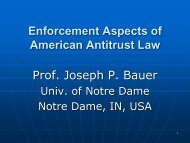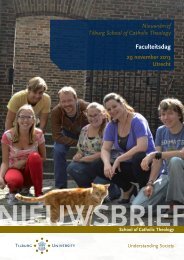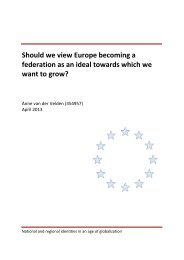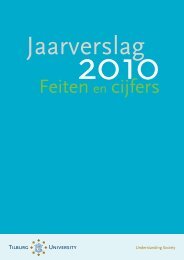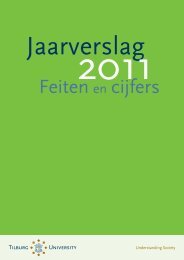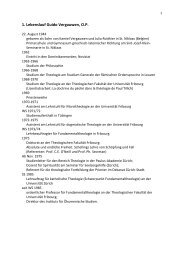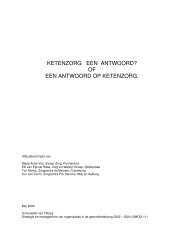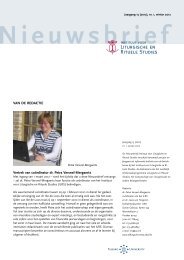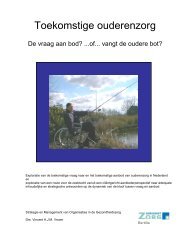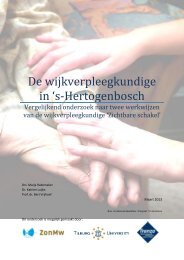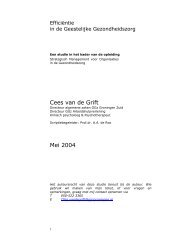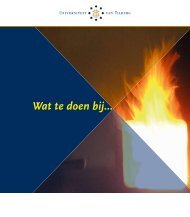Here - Tilburg University
Here - Tilburg University
Here - Tilburg University
Create successful ePaper yourself
Turn your PDF publications into a flip-book with our unique Google optimized e-Paper software.
Presenter<br />
Wesel van, Floryt; Dept. Methodology & Statistics, Utrecht <strong>University</strong><br />
Authors<br />
Floryt van Wesel and Hennie Boeije; Dept. of Methodology and Statistics,<br />
Utrecht <strong>University</strong><br />
Title<br />
Priors & Prejudice: Using existing knowledge in social science research<br />
Abstract<br />
Using Bayesian statistics implies the use of prior distributions. These prior<br />
distributions can contain information about the topic at hand that is already<br />
known from previous research. In this presentation we discuss how to acquire<br />
such existing information on the one hand and how to translate this information<br />
into a statistical prior distribution on the other hand. For the information part of<br />
the prior distribution we use three sources to formulate a single integrated<br />
theoretical model. The sources are: meta-analysis, qualitative synthesis and<br />
expert elicitation. The results that emerge from each individual source will be<br />
used to formulate an inequality constrained hypothesis. The three hypotheses<br />
are then integrated leading to an overall hypothesis representing the integrated<br />
model. This overall hypothesis is the existing information that determines the<br />
first part of the prior distribution. As the hypothesis does not contain any<br />
numerical information to base a statistical prior distribution on, we update a<br />
non-informative prior with a small part of the data, called a training sample. The<br />
final prior distribution consists of a combination of the information in the<br />
inequality constrained hypothesis and the training sample. The case we use to<br />
exemplify this procedure is that of factors influencing the development of post-<br />
traumatic stress disorder (PTSD) in children who have gone through trauma.



